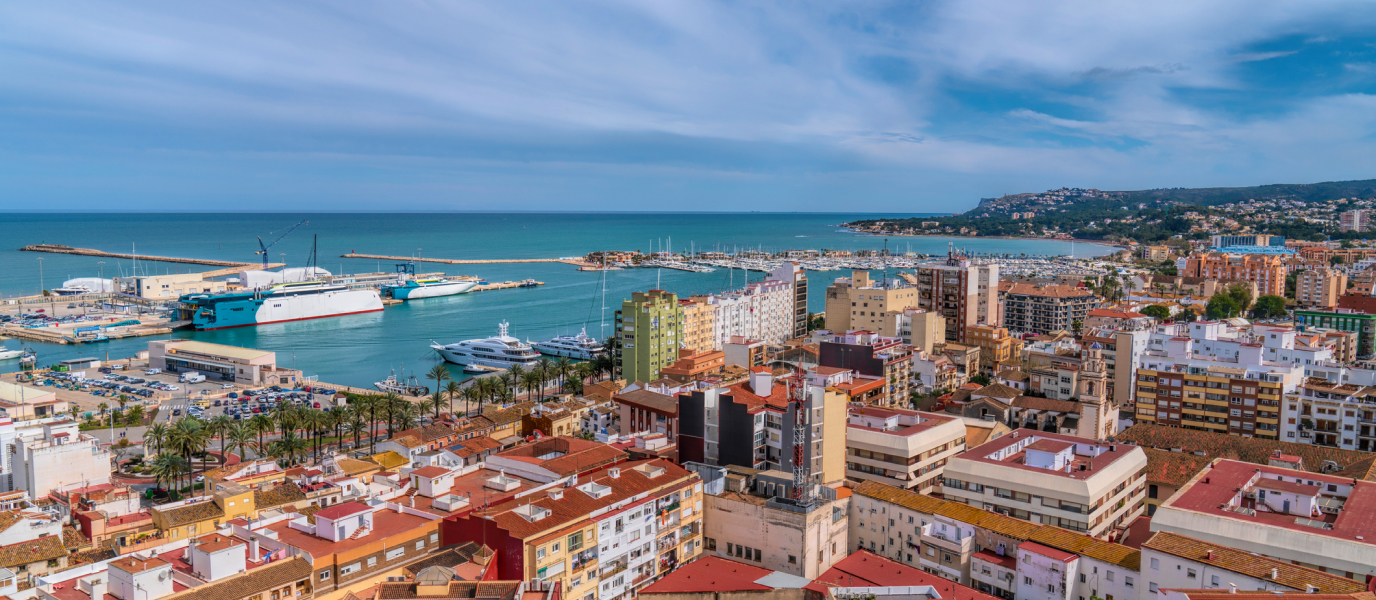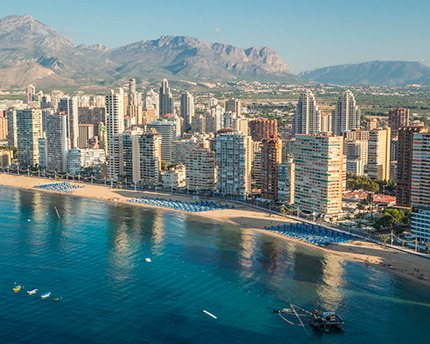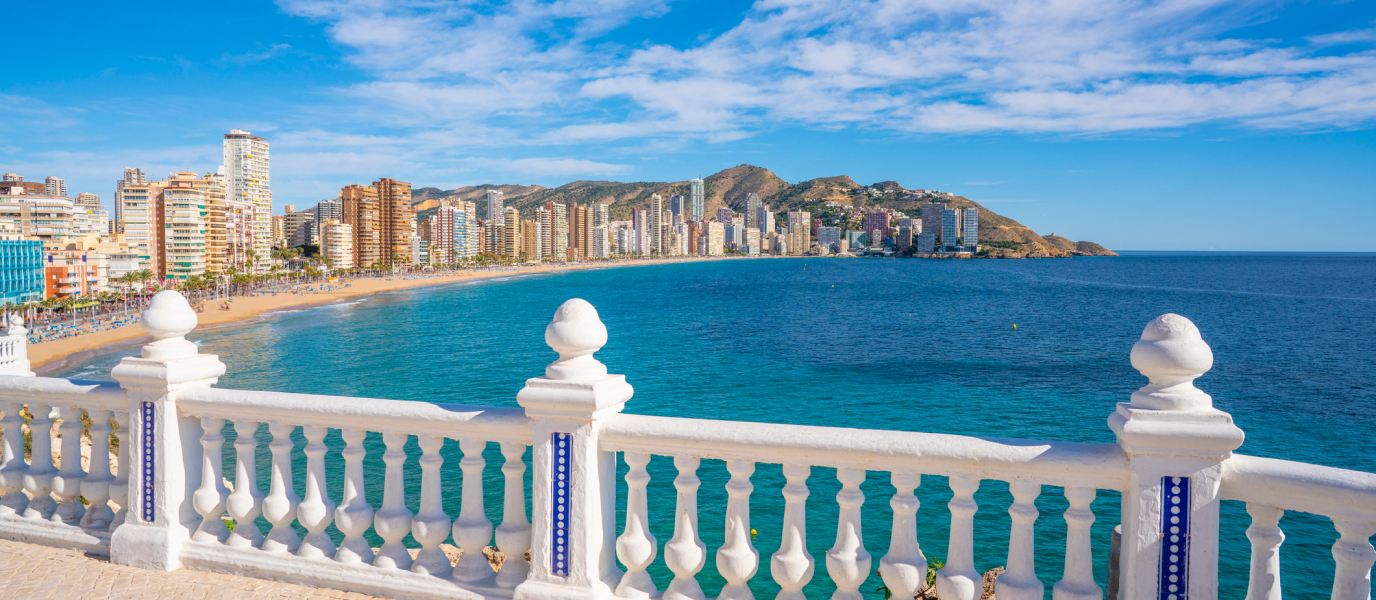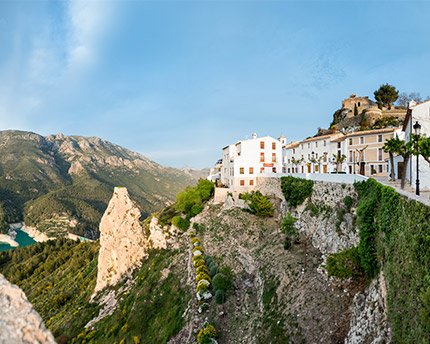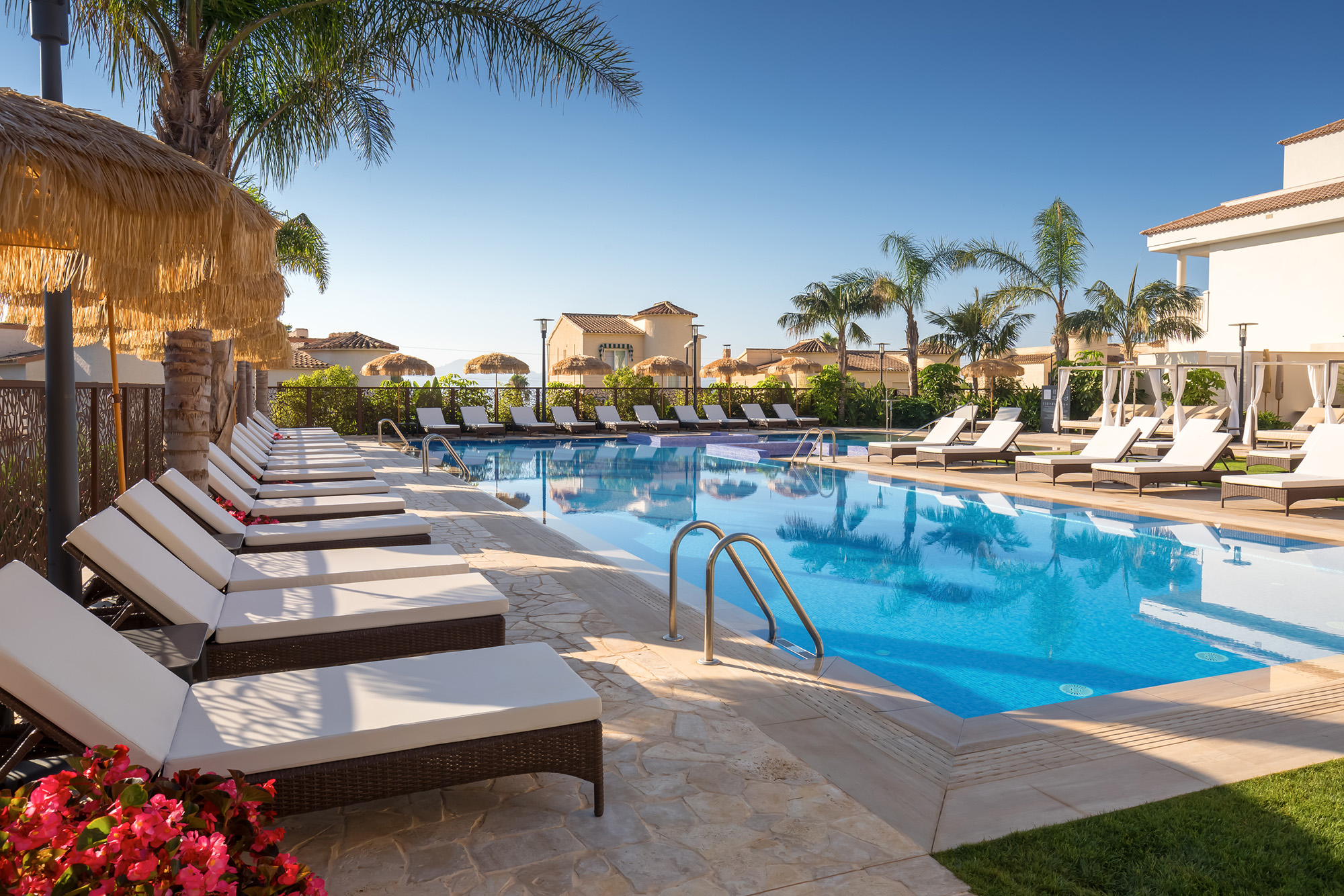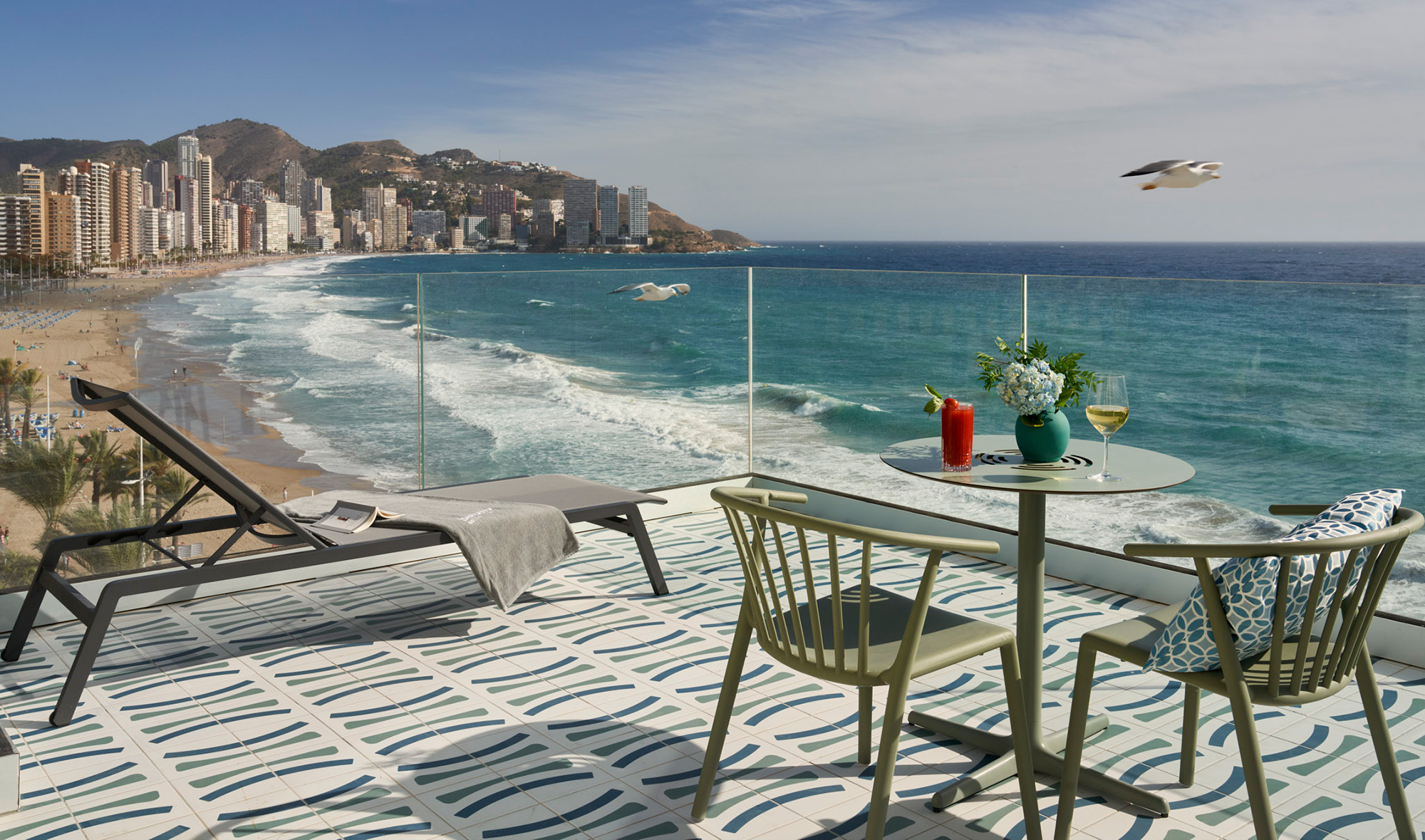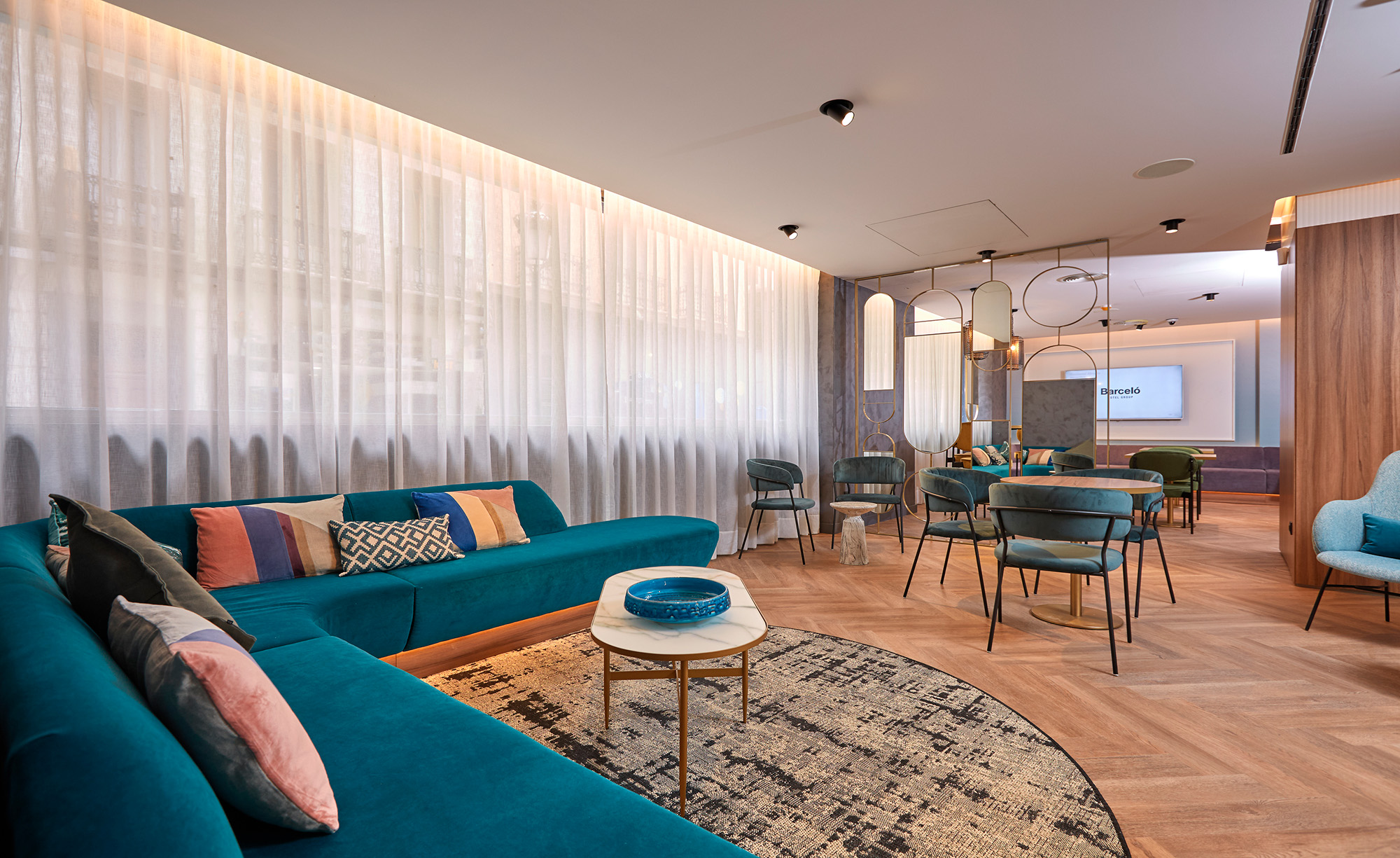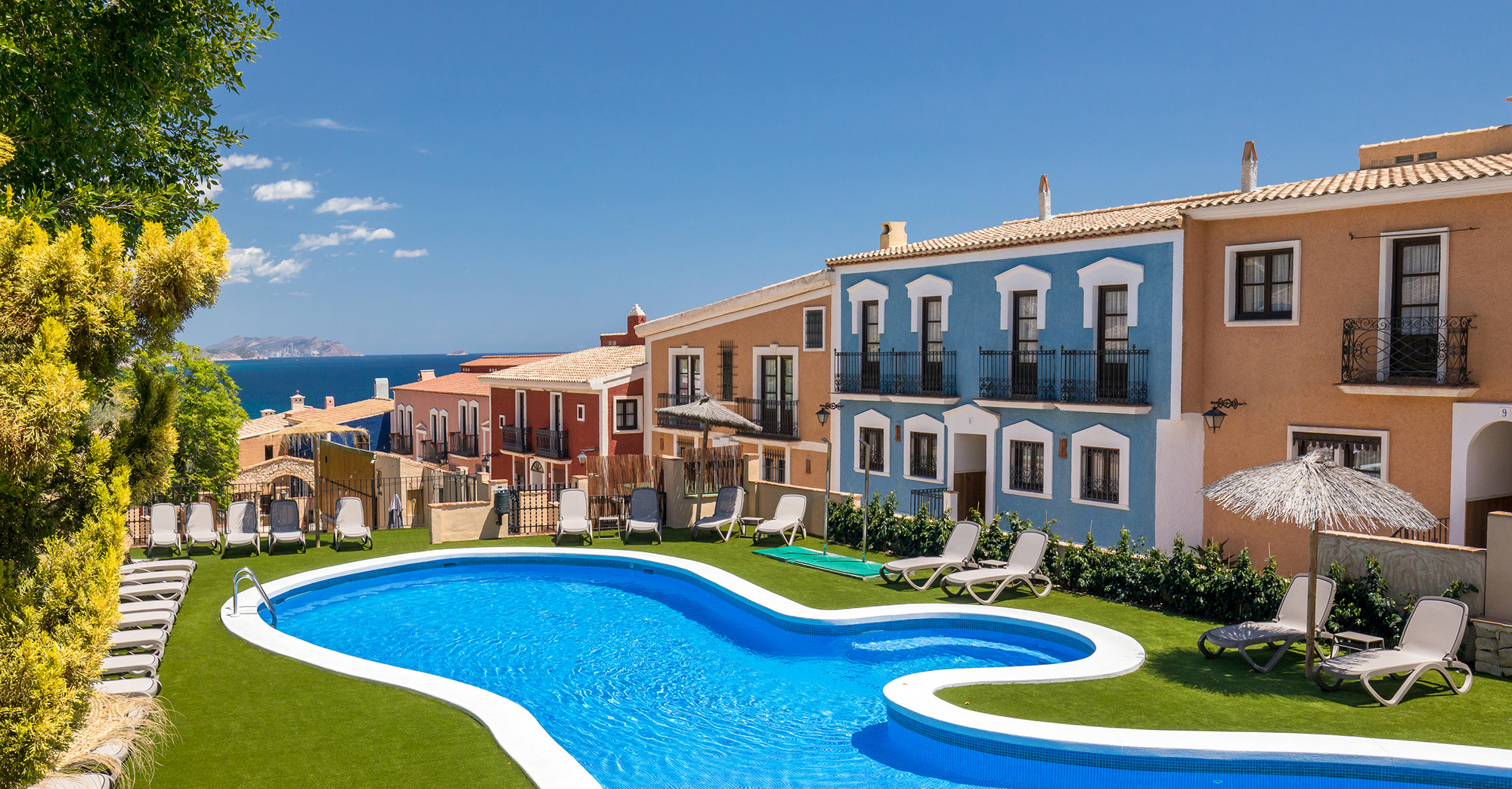Denia (Dénia in Valencian) is one of the most famous tourist destinations in Alicante province. It’s the capital of Marina Alta region and its population swells in summer thanks to the good climate, beaches, and stunning natural and seaside spaces.
The ultimate Mediterranean destination, Denia is located very close to Cap de la Nau, halfway between the cities of Valencia and Alicante and directly opposite the island of Ibiza.
Denia city centre (40,000 inhabitants) is small, meaning it can easily be explored in just a couple of hours. Read on to find out all about the essential sights in Denia and its surroundings.
Denia Castle
Denia Castle is definitely the most important heritage site in the municipality and it’s perched atop the highest point in the city. Pass through its modest entrance to enjoy a visit to the fortress, originally a Moorish structure that was built between the 11th and 12th centuries. It played a vital role as a defence mechanism against pirate attacks, and over the centuries new architectural elements were added in accordance with the historical period until it finally fell into disuse at the end of the 19th century.
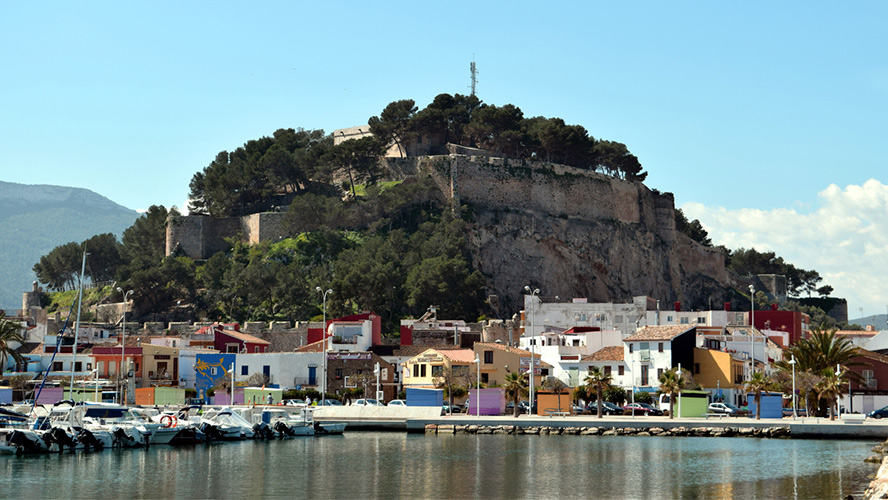
Today, Denia Castle has conserved several points of interest such as towers and doors that help visitors to appreciate its original purpose. An archaeological museum is housed inside with fascinating Iberian, Roman and Moorish pieces. The castle also has a wonderful viewpoint that looks out over the city and the Mediterranean Sea.
Denia historical centre
The centre of Denia is comprised of narrow streets that wind around the castle hill. Carrer de Loreto, the main street in the historical centre and a culinary hotspot, starts in Plaça de la Constitució where the town hall and church of Nostra Senyora de l’Assumpció are located. It’s also worth taking a stroll along the neighbouring streets of Carrer Major, Carrer Sant Josep and Carrer dels Cavallers.
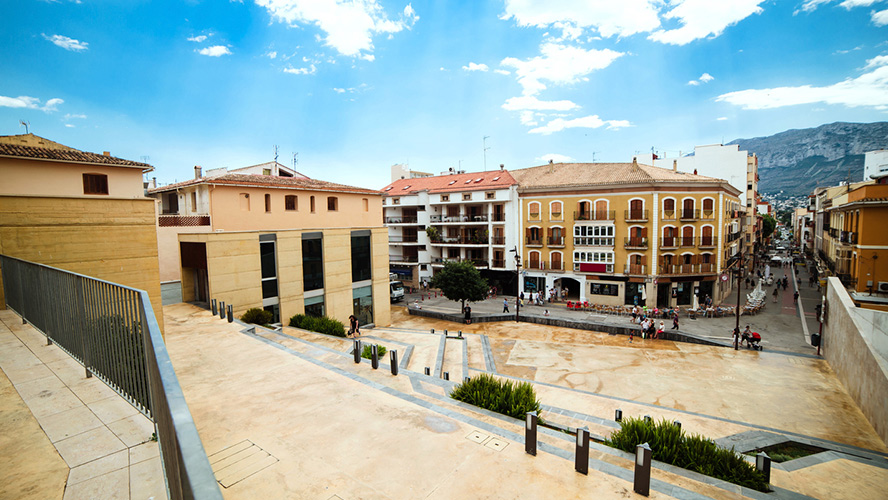
When visiting Denia, it’s a good idea to explore the area that overlooks the sea as well as the historical centre. Lively Carrer del Marqués de Campo joins the historical centre to the Esplanada Cervantes, famous for its characteristic palm trees. From this point you can extend your walk to Baix la Mar, a neighbourhood with a seafaring past that is set between the castle and the sea, and picturesque spots such as Plaça de Sant Antoni and Plaça de la Creu.
Les Marines beach
Denia has around 20 km of coastline with several beaches that run along the whole seafront and are are divided into two zones: Les Marines (west of the centre) and Les Rotes (to the east). The main beach in the city is Les Marines, 3 km of sand that starts at Baix la Mar neighbourhood and stetches out to Les Bovetes beach.
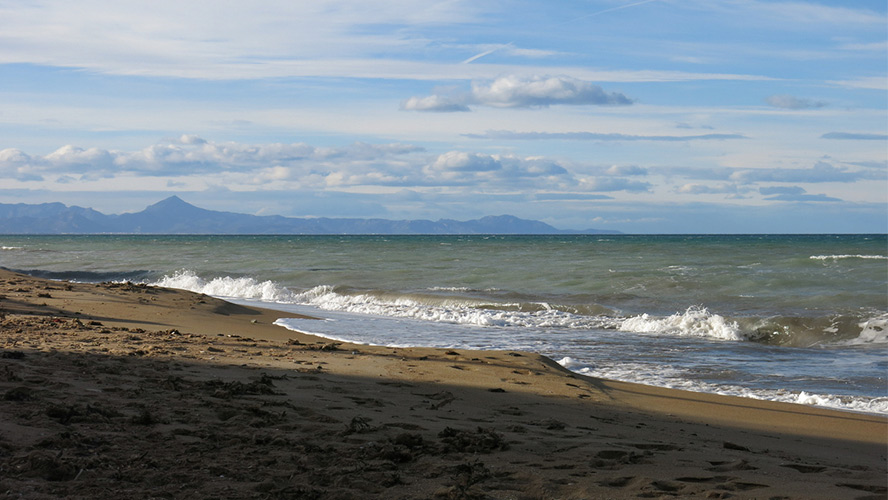
Les Marines is ideal for families thanks to its fine sand, ample space and numerous services such as sunbeds, lifeguards, toilets, dugout canoe hire and other watersports.
Denia market
In 2015 Denia was chosen by UNESCO as the 2015 Creative City of Gastronomy, recognition that helped to emphasise the value of the local cuisine. In addition to the numerous bars on Carrer de Loreto, you should pay a visit to Denia municipal market (Carrer Magallanes) where the finest produce of land and sea can be found. The best fish and seafood is brought straight here from the city’s fish market.
Denia greenways
The old FEVE railway line that linked Denia and Carcaixent is today one of Spain’s vías verdes or greenways. The train service ended in 1974 and, after being abandoned for several years, the route was reclaimed in 2013 for people’s use and enjoyment. The route is six kilometres long and connects Denia and El Vergel; it’s flat, very easy to follow and is also adapted for persons with reduced mobility. The surrounding landscape mainly features farmland with orange and almond trees, and other species typical to the region.
Montgó Natural Park
One of the jewels of Denia is Montgó Natural Park, which surrounds the municipality to the south, running from the coast and heading inland. The massif contains the local governments of Denia and Javea and it forms a physical wall between them, reaching an altitude of 753 m in some places. It’s a magnificent area for being in nature and following hiking trails while you enjoy outstanding views of the region and sea. There are nine signposted tracks and six hiking trails so it’s a great place to visit if you’re looking to do an activity in Denia.
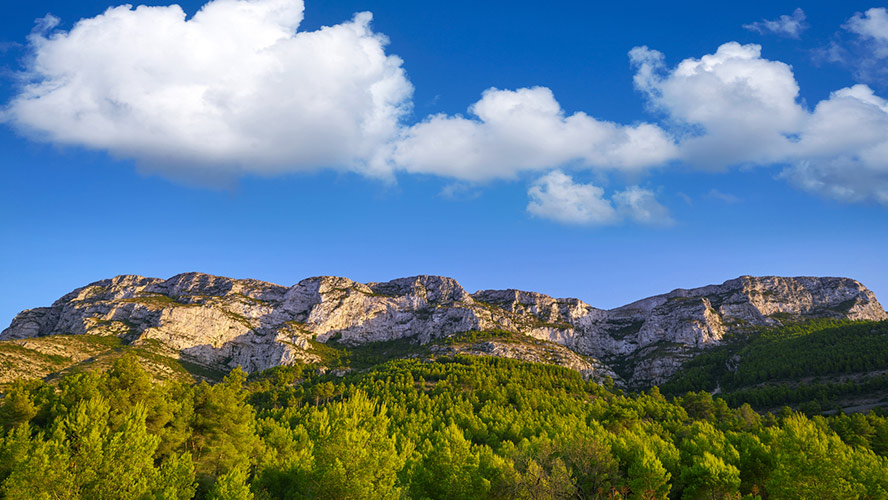
What to see near Denia
One of Denia’s greatest assets is its surroundings because it has countless attractions that can be visited to complement your trip.
Cova Tallada
Cova Tallada is just 25 minutes from Denia on the coast of Montgó Natural Park, and this seafront cave was excavated in ancient times to obtain toba, a type of limestone. The cave is 75 m wide and 15 m high and can be explored on foot, by kayak, paddle surf or diving. The latter option is a wonderful experience thanks to the transparent waters here. As an interesting aside, the cave contains an inscription stating that Philip III was there in 1599.
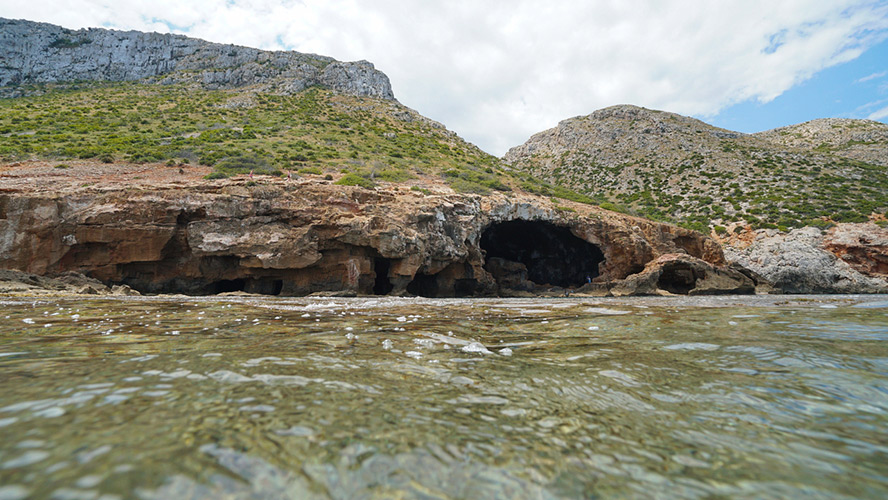
Javea
Javea, known as Xàbia in Valencian, is the neighbouring city to Denia and it’s located on the other side of the Montgó massif. It’s similar in style to Denia with a small historical centre and a coastline that consists of beaches and marinas. One of Javea’s best attractions is the Cap de Sant Antoni Marine Reserve where visitors can go scuba diving and admire the local sea life.
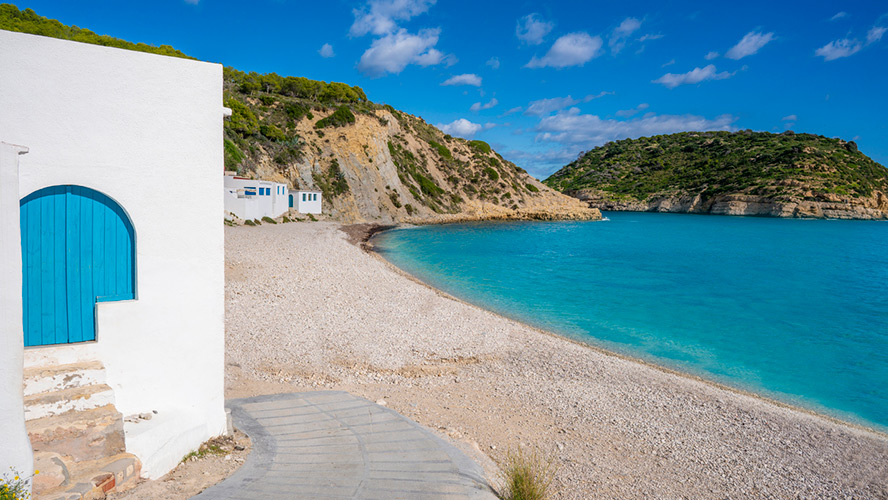
Cap de la Nau
Cap de la Nau is also located in Javea — it’s the most easterly corner of the Valencian Community and therefore a feature highly familiar to the region’s schoolchildren. This whole coastline is decidedly rugged with coves and small cliffs that give it a unique and characteristic appearance.
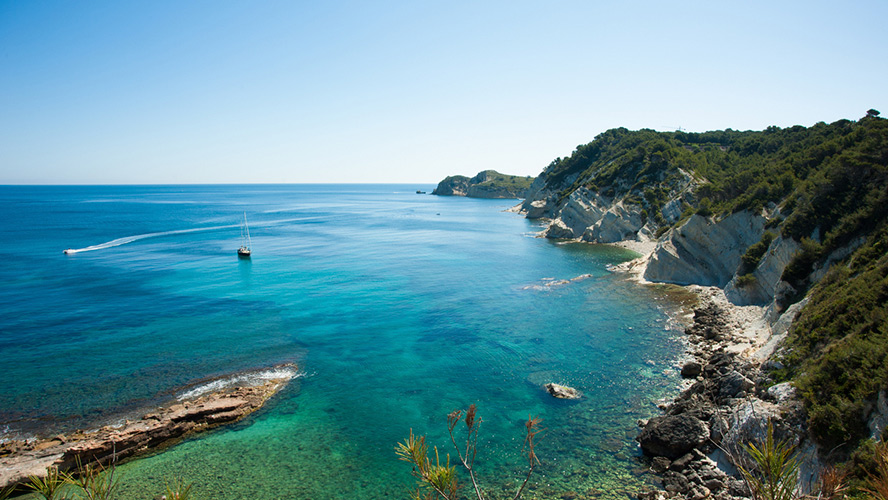
Where to eat in Denia
Denia was named Creative City of Gastronomy by UNESCO, as we mentioned earlier, and the city has numerous restaurants where you can enjoy delicious rice or produce from the Mediterranean Sea. Perhaps the most emblematic is Quique Dacosta Restaurante, the eponymous jewel in the crown of Extramaduran chef Quique Dacosta who has no fewer than three Michelin stars to his name.
Below is a selection of other excellent restaurants that will suit budgets of every kind:
La Seu: right on Carrer de Loreto, this avant garde restaurant uses choice produce with a creative flair.
Els Paellers: a good paella is essential when you’re in the Levante. This old house in Les Marines has one of the best paellas in Denia.
El Baret de Miquel: this small family bar is a mecca in Denia. Its owner once had a Michelin star but gave it all up, preferring to return to the simplicity and friendly atmosphere of a well-run bar. The downside: the waiting list.



























































